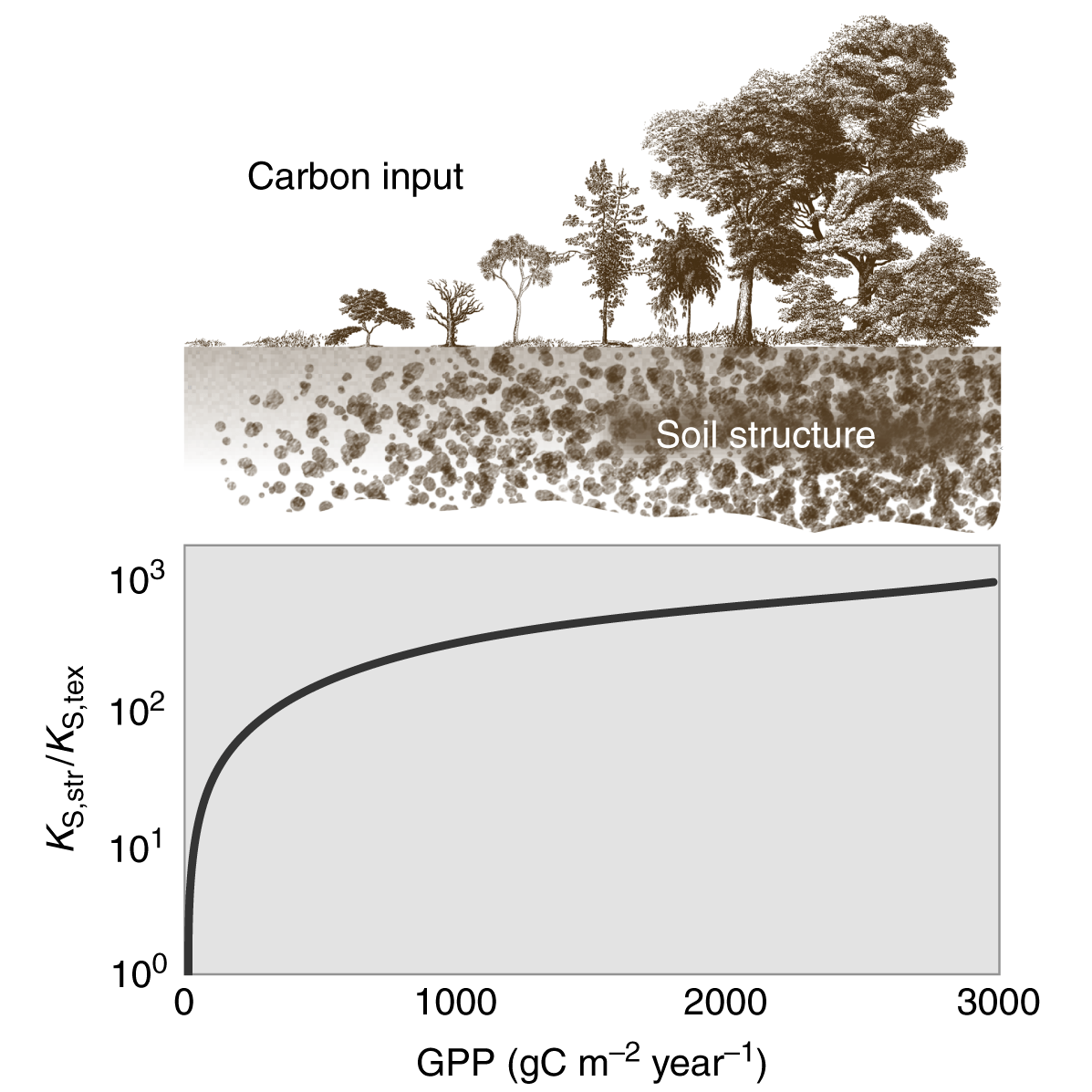January 27, 2020 by Teamrat A. Ghezzehei
Soil structure is an important omission in Earth System Models
Abstract
Saturated hydraulic conductivity (Ks) is a fundamental soil property that regulates the fate of water in soils. Its measurement, however, is cumbersome and instead pedotransfer functions (PTFs) are routinely used to estimate it. Despite much progress over the years, the performance of current generic PTFs estimating Ks remains poor. Using machine learning, high‐performance computing, and a large database of over 18,000 soils, we developed new PTFs to predict Ks. We compared the performances of four machine learning algorithms and different predictor sets. We evaluated the relative importance of soil properties in explaining Ks. PTF models based on boosted regression tree algorithm produced the best models with root‐mean‐squared log‐transformed error in ranges of 0.4 to 0.3 (log10(cm/day)). The 10th percentile particle diameter (d10) was found to be the most important predictor followed by clay content, bulk density (ρb), and organic carbon content (C). The sensitivity of Ks to soil structure was investigated using ρb and C as proxies for soil structure. An inverse relationship was observed between ρb and Ks, with the highest sensitivity at around 1.8 g/cm3 for most textural classes. Soil C showed a complex relationship with Ks with an overall positive relation for fine‐textured and midtextured soils but an inverse relation for coarse‐textured soils. This study sought to maximize the extraction of information from a large database to develop generic machine learning‐based PTFs for estimating Ks. Models developed here have been made publicly available and can be readily used to predict Ks.

